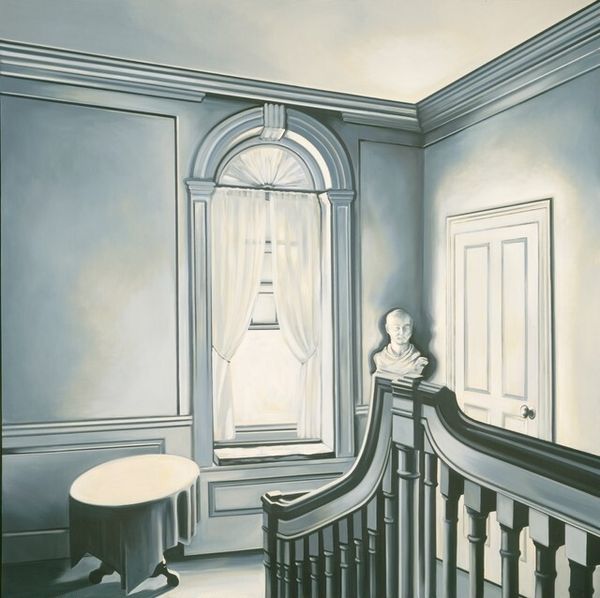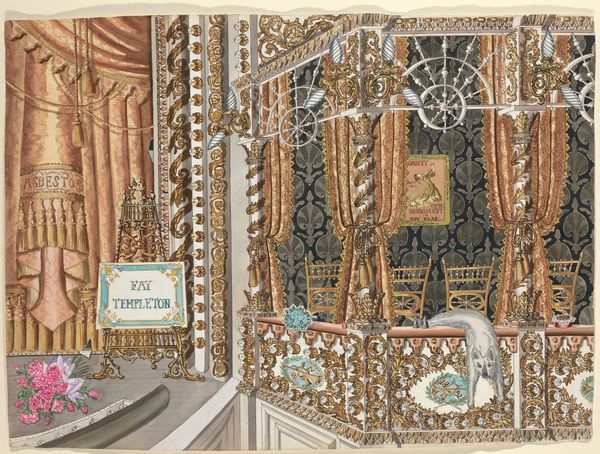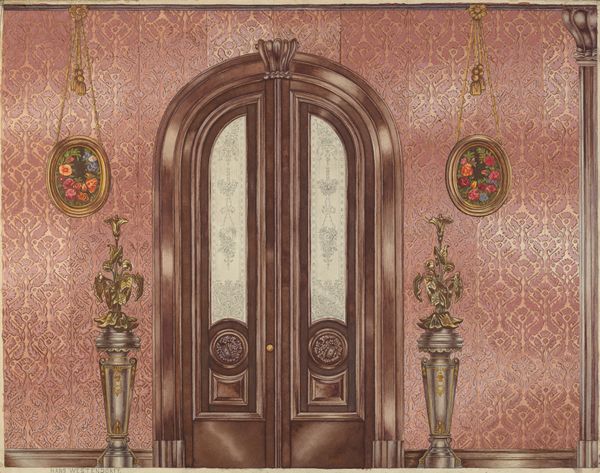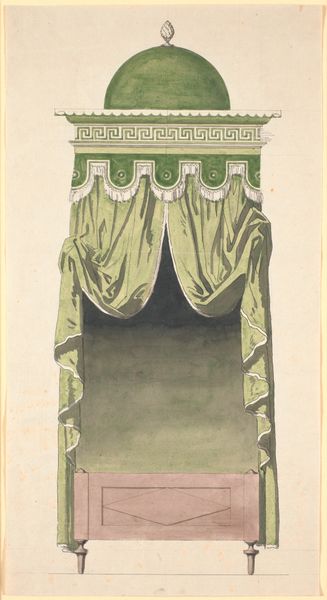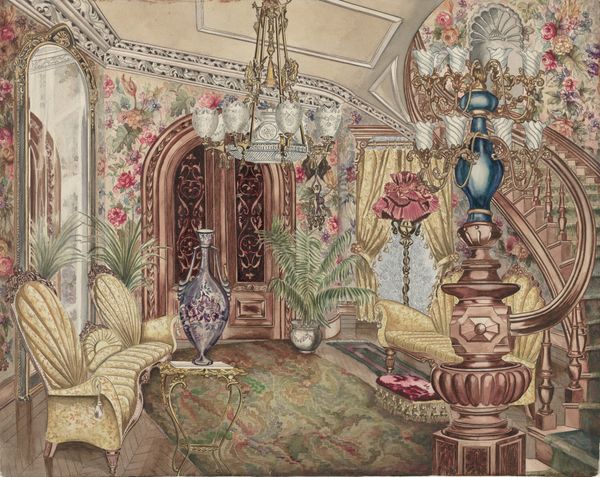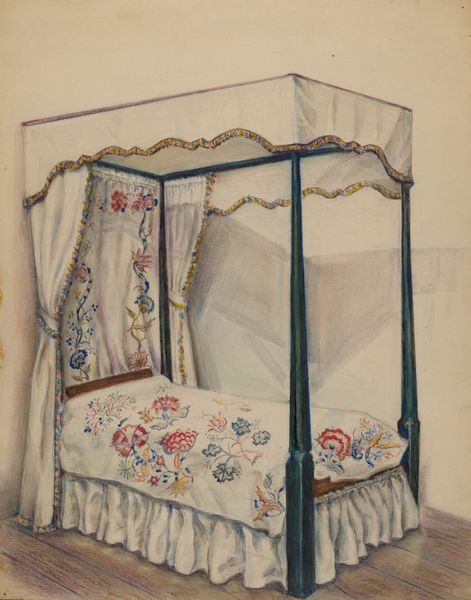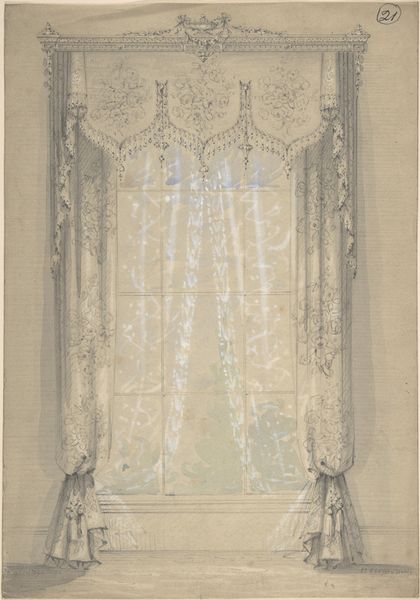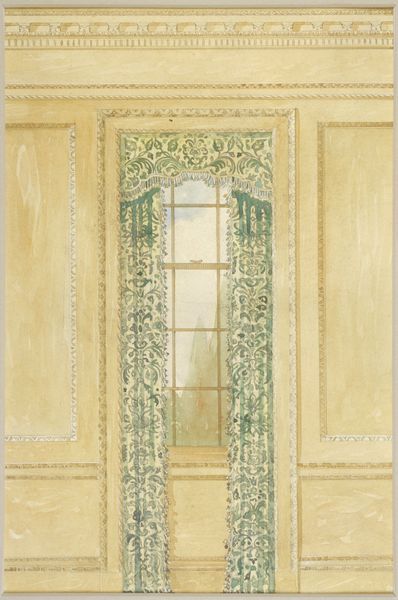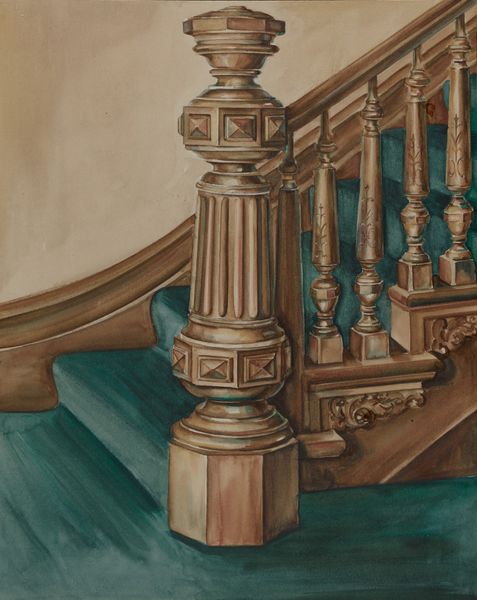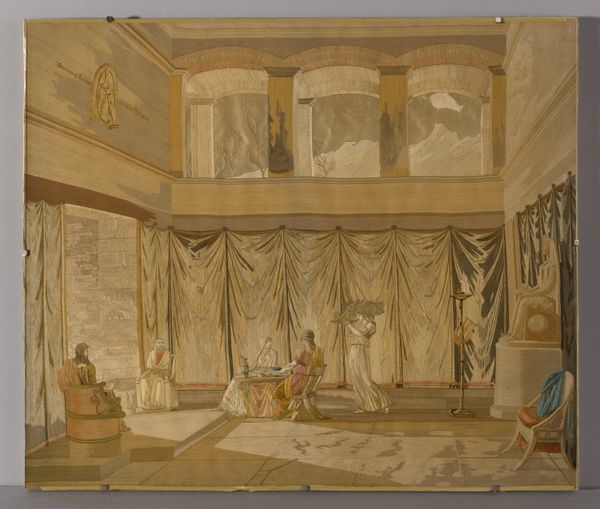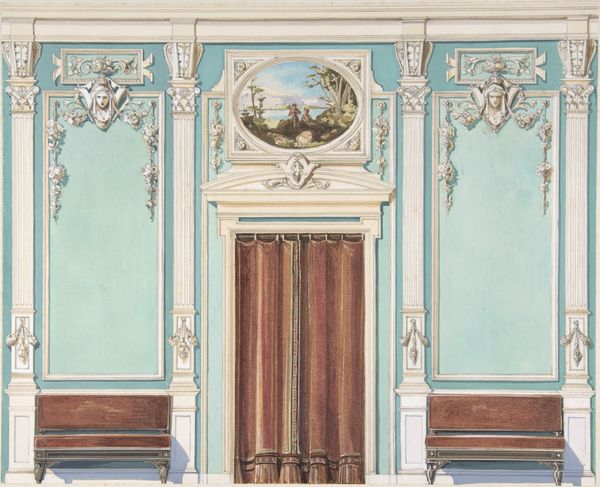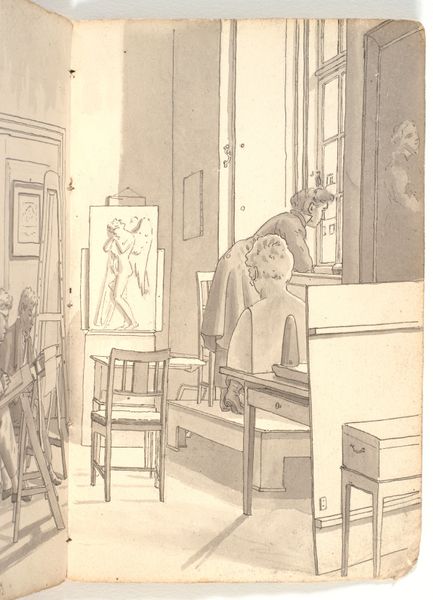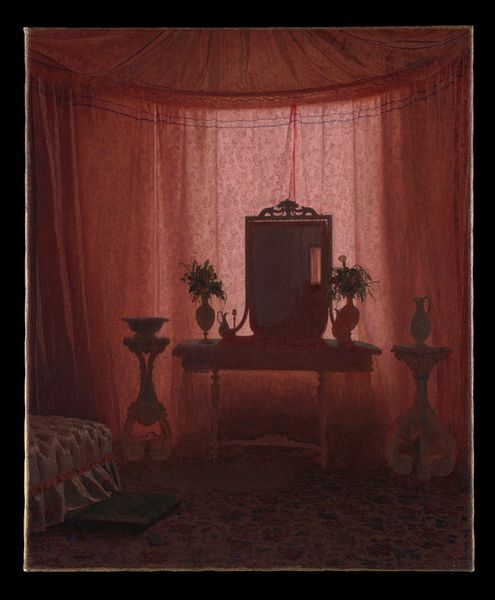
Interior Design for a Gray Curtained Alcove, with an Uphostered Armchair, Ottoman and Cabinet 1880 - 1900
0:00
0:00
drawing, print, architecture
#
drawing
#
art-nouveau
# print
#
architectural photography
#
art nouveau
#
architecture
Dimensions: sheet: 9 1/2 x 7 1/2 in. (24.1 x 19.1 cm)
Copyright: Public Domain
Curator: This is a fascinating late 19th-century piece titled "Interior Design for a Gray Curtained Alcove, with an Upholstered Armchair, Ottoman and Cabinet." It's currently part of the Metropolitan Museum of Art's collection, though the designer remains anonymous. Editor: The color palette strikes me first – the muted gold curtain against the pale blue walls creates a sense of subdued luxury. It’s like a stage set, carefully composed and slightly melancholic. Curator: I think that captures something essential. Considering its timeframe, around 1880 to 1900, we're looking at a society undergoing significant shifts in gender roles and class structures. This meticulously designed alcove may be understood as an attempt to articulate social aspirations within a rapidly changing world. Editor: Right, and it does convey stability. The classical column motif contrasted with what looks like an Art Nouveau style armchair points to the era's shifting visual language. The repetition of circular shapes - the ottoman, the chair's form, the rosette on the column—creates a self-contained world, almost womb-like in its feeling of enclosure. What do you think it says about how women were viewed at that time? Curator: That's insightful. We might see it as emblematic of the prescribed domestic roles for upper-class women: a haven but also a confine. Note the arrangement where every element reinforces containment and comfort. The lack of figures reinforces its isolated ambience; we can only interpret the absence by asking questions about who and what this carefully controlled domestic setting sought to represent. Editor: The single, unadorned vase within the cabinet then becomes potent—a symbol, perhaps, of feminine presence and domestic creativity carefully contained within this stylized space. I also see a reference to permanence with those stylized motifs. Curator: Yes. It becomes important to acknowledge these kinds of historical interpretations because that makes visible the way these seemingly simple arrangements convey meaning over time and in new contexts. Editor: Ultimately, this exploration makes you consider how physical spaces, especially intimate ones, shape and mirror larger social forces and individual stories. Curator: Precisely. And this dialogue illuminates that relationship from multiple critical positions, reminding us how vital interdisciplinary perspectives are in art interpretation.
Comments
No comments
Be the first to comment and join the conversation on the ultimate creative platform.
